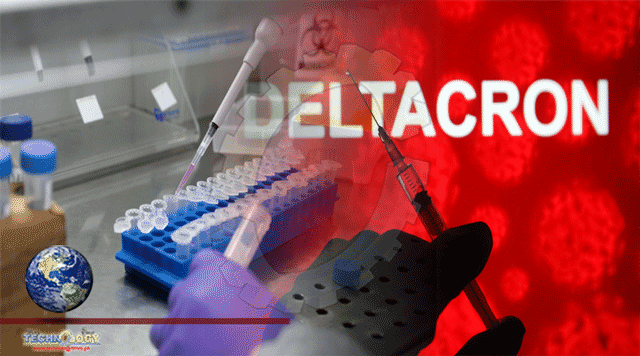Researchers from the University of Cyprus last week reported a new strain of the coronavirus that appeared to be a hybrid of the Delta and Omicron variants. But doubts later emerged about the “Deltacron” hybrid – with some attributing it to data error during genome sequencing – and the sequences were withdrawn from an open-source genome information database.

Leondios Kostrikis, a professor of biological sciences at the university, told Bloomberg last weekend that his team had found 25 patients who were infected with a strain of the coronavirus with Omicron-like genetic signatures within the Delta genomes. The genome sequencing data was uploaded to open source database Gisaid.org.
But other scientists concluded the findings could be the results of a lab error, with virologist Tom Peacock from Imperial College London tweeting that it looked “to be quite clearly contamination” rather than a real recombination.
The specific region of the sequences with Omicron-like mutations tend to “drop out” during the sequencing process and the gap could be accidentally replaced with fragments of Omicron which were amplified and result in hybrid genomes, Peacock said.
He added that it was not really related to the “quality of the lab” or anything similar and such errors happened at every sequencing lab from time to time.
Maria Van Kerkhove, the World Health Organization’s technical lead on Covid-19, sought to discourage use of terms like Deltacron, flurona or flurone, the latter referring to co-infection flu.
“These words imply a combination of viruses and variants and this is not happening. ‘Deltacron’ is likely contaminated during sequencing,” she wrote on Twitter.
Yes, a recombination of different variants is possible.
Björn Meyer, a virologist with Otto von Guericke University Magdeburg in Germany, said that by recombining two viral genomes that infect the same cell, viruses can purge mutations that might have a negative impact.
“It is therefore a kind of genomic maintenance for viral populations, in some ways,” Meyer said.
He said the genome of the resulting recombinant virus had to match the order of the parental viruses, a process called “homologous recombination”, to ensure a fully functional virus.
Researchers with the National Institute of Infectious Diseases in Japan published a non-peer-reviewed paper in October that reported genomic recombination between the Delta and Alpha variants in 26 Sars-CoV-2 patient samples in Japan.
And in a paper published in Cell in September, researchers from the University of Edinburgh, Pennsylvania State University and other institutions said 16 genomes among the 279,000 or so they analysed showed evidence of recombination.
The genomes were mostly between the Alpha variant and B.1.177 variants, first reported in Spain in the summer of 2020. It was transmitted to 45 people before disappearing.
Jin Dong-Yan, a virologist from the University of Hong Kong, said that such a recombinant variant was possible but would be very rare because it would have to happen during co-infection and a person was likely to produce immunity that could prevent infection of a second variant.
“In places such as the United States where we see the Delta and Omicron variants circulating at the same time, it is possible that a person infected with one variant would not have the immunity to stop the Omicron variant attacking his body soon after,” Jin said. “But it would be very rare.”
He added that it would be difficult to tell clinically that there was a co-infection of the two variants, and if recombination occurred more frequently than expected, it would still be very rare for the recombinant variant to survive, not to mention outcompete the circulating variant.
“Only under certain circumstances has the recombinant variant showed a growth advantage in people who have antibodies against Sars-CoV-2,” he said, referring to the virus that causes Covid-19. “Otherwise these recombinant variants don’t become dominant and just disappear.”
Meyer, from Otto von Guericke University Magdeburg, said the recombinant virus had to compete with the parental viruses and “outcompete them to some extent” to ensure transmission, which meant it was less likely for the recombinant to have an impact even if the process did occur. One of the fears about the emergence of a recombinant Deltacron variant is that it gains the high transmissibility of the Omicron variant while still being able to cause severe clinical outcomes.
The Omicron variant features mutations on the spike protein, which plays a key role in infecting human cells, and that makes the Omicron easier to dodge the immunity from infection or vaccination.
Some mutations were also responsible for a potential switch of routes of entry for the virus, which might explain the decline in the severity of the disease observed, Meyer said.
“A recombination of these two viruses might occur, but the generated new recombinant would likely result in a virus that behaves like Omicron, which can evade our antibodies to some extent, but causes less severe disease in vaccinated people,” Meyer said.
“Or it will be like Deltacron, which might cause more severe disease, also more likely in unvaccinated people, but is more easily recognised in vaccinated or previously infected people and does not cause severe disease as a consequence.”
Source: Asia One
